ESA Observing the Earth 
zdroje zpráv:
Copernicus Sentinel-1D launch highlights
5.11.2025 0:30 Video:
00:01:48
Video:
00:01:48
The Copernicus Sentinel-1D satellite has joined the Sentinel-1 mission in orbit. Launch took place on 4 November 2025 at 22:02 CET (18:02 local time) on board an Ariane 6 launcher from Europe’s Spaceport in French Guiana.
The Sentinel-1 mission delivers high-resolution radar images of Earth’s surface, performing in all weathers, day-and-night. This service is used by disaster response teams, environmental agencies, maritime authorities and climate scientists, who depend on frequent updates of critical data.
Sentinel-1D will work in tandem with Sentinel-1C, flying in the same orbit but 180° apart, to optimise global coverage and data delivery. Both satellites have a C-band synthetic aperture radar (SAR) instrument on board, which captures high-resolution imagery of Earth’s surface. They are also equipped with Automatic Identification System (AIS) instruments to improve detection and tracking of ships. When Sentinel-1D is fully operational, it will enable more frequent AIS observations, including data on vessel identity, location and direction of passage, enabling precise tracking.
Sentinel-1D was launched on Europe’s heavy-lift rocket Ariane 6 on flight designated VA265.
Read full story: Copernicus Sentinel-1D reaches orbit on Ariane 6
Access the related broadcast quality video material: Sentinel-1D launch on Ariane 6 - VA265 / Sentinel-1 mission animations
Copernicus Sentinel-1D launch highlights
5.11.2025 0:30 Video:
00:01:48
Video:
00:01:48
The Copernicus Sentinel-1D satellite has joined the Sentinel-1 mission in orbit. Launch took place on 4 November 2025 at 22:02 CET (18:02 local time) on board an Ariane 6 launcher from Europe’s Spaceport in French Guiana.
The Sentinel-1 mission delivers high-resolution radar images of Earth’s surface, performing in all weathers, day-and-night. This service is used by disaster response teams, environmental agencies, maritime authorities and climate scientists, who depend on frequent updates of critical data.
Sentinel-1D will work in tandem with Sentinel-1C, flying in the same orbit but 180° apart, to optimise global coverage and data delivery. Both satellites have a C-band synthetic aperture radar (SAR) instrument on board, which captures high-resolution imagery of Earth’s surface. They are also equipped with Automatic Identification System (AIS) instruments to improve detection and tracking of ships. When Sentinel-1D is fully operational, it will enable more frequent AIS observations, including data on vessel identity, location and direction of passage, enabling precise tracking.
Sentinel-1D was launched on Europe’s heavy-lift rocket Ariane 6 on flight designated VA265.
Read full story: Copernicus Sentinel-1D reaches orbit on Ariane 6
Replay: Sentinel-1D launch press conference
5.11.2025 0:15 Video:
00:30:00
Video:
00:30:00
The Copernicus Sentinel-1D satellite has joined the Sentinel-1 mission in orbit. Launch took place on 4 November 2025 at 22:02 CET (18:02 local time) on board an Ariane 6 launcher from Europe’s Spaceport in French Guiana.
The Sentinel-1 mission delivers high-resolution radar images of Earth’s surface, performing in all weathers, day-and-night. This service is used by disaster response teams, environmental agencies, maritime authorities and climate scientists, who depend on frequent updates of critical data.
Sentinel-1D will work in tandem with Sentinel-1C, flying in the same orbit but 180° apart, to optimise global coverage and data delivery. Both satellites have a C-band synthetic aperture radar (SAR) instrument on board, which captures high-resolution imagery of Earth’s surface. They are also equipped with Automatic Identification System (AIS) instruments to improve detection and tracking of ships. When Sentinel-1D is fully operational, it will enable more frequent AIS observations, including data on vessel identity, location and direction of passage, enabling precise tracking.
Sentinel-1D was launched on Europe’s heavy-lift rocket Ariane 6 on flight designated VA265.
Read full story: Copernicus Sentinel-1D reaches orbit on Ariane 6
Access the related broadcast quality video material: Sentinel-1D launch on Ariane 6 - VA265 / Sentinel-1 mission animations
Replay: Sentinel-1D launch press conference
5.11.2025 0:15 Video:
00:30:00
Video:
00:30:00
The Copernicus Sentinel-1D satellite has joined the Sentinel-1 mission in orbit. Launch took place on 4 November 2025 at 22:02 CET (18:02 local time) on board an Ariane 6 launcher from Europe’s Spaceport in French Guiana.
The Sentinel-1 mission delivers high-resolution radar images of Earth’s surface, performing in all weathers, day-and-night. This service is used by disaster response teams, environmental agencies, maritime authorities and climate scientists, who depend on frequent updates of critical data.
Sentinel-1D will work in tandem with Sentinel-1C, flying in the same orbit but 180° apart, to optimise global coverage and data delivery. Both satellites have a C-band synthetic aperture radar (SAR) instrument on board, which captures high-resolution imagery of Earth’s surface. They are also equipped with Automatic Identification System (AIS) instruments to improve detection and tracking of ships. When Sentinel-1D is fully operational, it will enable more frequent AIS observations, including data on vessel identity, location and direction of passage, enabling precise tracking.
Sentinel-1D was launched on Europe’s heavy-lift rocket Ariane 6 on flight designated VA265.
Read full story: Copernicus Sentinel-1D reaches orbit on Ariane 6
Sentinel-1D reaches orbit on Ariane 6
4.11.2025 23:38
The Sentinel-1 mission – which provides radar vision for the Copernicus Earth observation programme – has a new addition to its family of satellites, with the arrival in orbit of Sentinel-1D, the last of the groundbreaking first generation. The launch took place at 22:02 CET (18:02 local time), on Tuesday, 4 November, on board an Ariane 6 launcher from Europe’s Spaceport in French Guiana.
Sentinel-1D reaches orbit on Ariane 6
4.11.2025 23:38
The Sentinel-1 mission – which provides radar vision for the Copernicus Earth observation programme – has a new addition to its family of satellites, with the arrival in orbit of Sentinel-1D, the last of the groundbreaking first generation. The launch took place at 22:02 CET (18:02 local time), on Tuesday, 4 November, on board an Ariane 6 launcher from Europe’s Spaceport in French Guiana.
Sentinel-1D reaches orbit on Ariane 6
4.11.2025 23:38
The Sentinel-1 mission – which provides radar vision for the Copernicus Earth observation programme – has a new addition to its family of satellites, with the arrival in orbit of Sentinel-1D, the last of the groundbreaking first generation. The launch took place at 22:02 CET (18:02 local time), on Tuesday, 4 November, on board an Ariane 6 launcher from Europe’s Spaceport in French Guiana.
Copernicus Sentinel-1D launch coverage
4.11.2025 23:00 Video:
01:17:22
Video:
01:17:22
The Copernicus Sentinel-1D satellite has joined the Sentinel-1 mission in orbit. Launch took place on 4 November 2025 at 22:03 CET (18:03 local time) on board an Ariane 6 rocket from Europe’s Spaceport in French Guiana.
The Sentinel-1 mission delivers high-resolution radar images of Earth’s surface, performing in all weathers, day-and-night. This service is used by disaster response teams, environmental agencies, maritime authorities and climate scientists, who depend on frequent updates of critical data.
The Sentinel-1D satellite will work in tandem with Sentinel-1C, flying in the same orbit but 180° apart, to optimise global coverage and data delivery. Both satellites have a C-band synthetic aperture radar (SAR) instrument on board, which captures high-resolution imagery of Earth’s surface. They are also equipped with Automatic Identification System (AIS) instruments to improve detection and tracking of ships. When Sentinel-1D is fully operational, it will enable more frequent AIS observations, including data on vessel identity, location and direction of passage, enabling precise tracking.
Sentinel-1D was launched on Europe’s heavy-lift rocket Ariane 6 on flight designated VA265.
Copernicus Sentinel-1D launch coverage
4.11.2025 23:00 Video:
01:17:22
Video:
01:17:22
The Copernicus Sentinel-1D satellite has joined the Sentinel-1 mission in orbit. Launch took place on 4 November 2025 at 22:03 CET (18:03 local time) on board an Ariane 6 rocket from Europe’s Spaceport in French Guiana.
The Sentinel-1 mission delivers high-resolution radar images of Earth’s surface, performing in all weathers, day-and-night. This service is used by disaster response teams, environmental agencies, maritime authorities and climate scientists, who depend on frequent updates of critical data.
The Sentinel-1D satellite will work in tandem with Sentinel-1C, flying in the same orbit but 180° apart, to optimise global coverage and data delivery. Both satellites have a C-band synthetic aperture radar (SAR) instrument on board, which captures high-resolution imagery of Earth’s surface. They are also equipped with Automatic Identification System (AIS) instruments to improve detection and tracking of ships. When Sentinel-1D is fully operational, it will enable more frequent AIS observations, including data on vessel identity, location and direction of passage, enabling precise tracking.
Sentinel-1D was launched on Europe’s heavy-lift rocket Ariane 6 on flight designated VA265.
Read full story: Copernicus Sentinel-1D reaches orbit on Ariane 6
Access the related broadcast quality video material: Sentinel-1D launch on Ariane 6 - VA265 / Sentinel-1 mission animations
Copernicus Sentinel-1D launch coverage
4.11.2025 23:00 Video:
01:17:22
Video:
01:17:22
The Copernicus Sentinel-1D satellite has joined the Sentinel-1 mission in orbit. Launch took place on 4 November 2025 at 22:03 CET (18:03 local time) on board an Ariane 6 rocket from Europe’s Spaceport in French Guiana.
The Sentinel-1 mission delivers high-resolution radar images of Earth’s surface, performing in all weathers, day-and-night. This service is used by disaster response teams, environmental agencies, maritime authorities and climate scientists, who depend on frequent updates of critical data.
The Sentinel-1D satellite will work in tandem with Sentinel-1C, flying in the same orbit but 180° apart, to optimise global coverage and data delivery. Both satellites have a C-band synthetic aperture radar (SAR) instrument on board, which captures high-resolution imagery of Earth’s surface. They are also equipped with Automatic Identification System (AIS) instruments to improve detection and tracking of ships. When Sentinel-1D is fully operational, it will enable more frequent AIS observations, including data on vessel identity, location and direction of passage, enabling precise tracking.
Sentinel-1D was launched on Europe’s heavy-lift rocket Ariane 6 on flight designated VA265.
Read full story: Copernicus Sentinel-1D reaches orbit on Ariane 6
Sentinel-1D is launched on Ariane 6
4.11.2025 22:15 Video:
00:03:11
Video:
00:03:11
The Copernicus Sentinel-1D satellite has joined the Sentinel-1 mission in orbit. Launch took place on 4 November 2025 at 22:03 CET (18:03 local time) on board an Ariane 6 launcher from Europe’s Spaceport in French Guiana.
The Sentinel-1 mission delivers high-resolution radar images of Earth’s surface, performing in all weathers, day-and-night. This service is used by disaster response teams, environmental agencies, maritime authorities and climate scientists, who depend on frequent updates of critical data.
Sentinel-1D will work in tandem with Sentinel-1C, flying in the same orbit but 180° apart, to optimise global coverage and data delivery. Both satellites have a C-band synthetic aperture radar (SAR) instrument on board, which captures high-resolution imagery of Earth’s surface. They are also equipped with Automatic Identification System (AIS) instruments to improve detection and tracking of ships. When Sentinel-1D is fully operational, it will enable more frequent AIS observations, including data on vessel identity, location and direction of passage, enabling precise tracking.
Sentinel-1D was launched on Europe’s heavy-lift rocket Ariane 6 on flight designated VA265.
Read full story: Copernicus Sentinel-1D reaches orbit on Ariane 6
Access the related broadcast quality video material: Sentinel-1D launch on Ariane 6 - VA265 / Sentinel-1 mission animations
Sentinel-1D is launched on Ariane 6
4.11.2025 22:15 Video:
00:03:11
Video:
00:03:11
The Copernicus Sentinel-1D satellite has joined the Sentinel-1 mission in orbit. Launch took place on 4 November 2025 at 22:03 CET (18:03 local time) on board an Ariane 6 launcher from Europe’s Spaceport in French Guiana.
The Sentinel-1 mission delivers high-resolution radar images of Earth’s surface, performing in all weathers, day-and-night. This service is used by disaster response teams, environmental agencies, maritime authorities and climate scientists, who depend on frequent updates of critical data.
Sentinel-1D will work in tandem with Sentinel-1C, flying in the same orbit but 180° apart, to optimise global coverage and data delivery. Both satellites have a C-band synthetic aperture radar (SAR) instrument on board, which captures high-resolution imagery of Earth’s surface. They are also equipped with Automatic Identification System (AIS) instruments to improve detection and tracking of ships. When Sentinel-1D is fully operational, it will enable more frequent AIS observations, including data on vessel identity, location and direction of passage, enabling precise tracking.
Sentinel-1D was launched on Europe’s heavy-lift rocket Ariane 6 on flight designated VA265.
Read full story: Copernicus Sentinel-1D reaches orbit on Ariane 6
Sentinel-1D is launched on Ariane 6
4.11.2025 22:15 Video:
00:00:00
Video:
00:00:00
The Copernicus Sentinel-1D satellite has joined the Sentinel-1 mission in orbit. Launch took place on 4 November 2025 at 22:03 CET (18:03 local time) on board an Ariane 6 launcher from Europe’s Spaceport in French Guiana.
The Sentinel-1 mission delivers high-resolution radar images of Earth’s surface, performing in all weathers, day-and-night. This service is used by disaster response teams, environmental agencies, maritime authorities and climate scientists, who depend on frequent updates of critical data.
Sentinel-1D will work in tandem with Sentinel-1C, flying in the same orbit but 180° apart, to optimise global coverage and data delivery. Both satellites have a C-band synthetic aperture radar (SAR) instrument on board, which captures high-resolution imagery of Earth’s surface. They are also equipped with Automatic Identification System (AIS) instruments to improve detection and tracking of ships. When Sentinel-1D is fully operational, it will enable more frequent AIS observations, including data on vessel identity, location and direction of passage, enabling precise tracking.
Sentinel-1D was launched on Europe’s heavy-lift rocket Ariane 6 on flight designated VA265.
Sentinel-1D is launched on Ariane 6
4.11.2025 22:15 Video:
00:03:11
Video:
00:03:11
The Copernicus Sentinel-1D satellite has joined the Sentinel-1 mission in orbit. Launch took place on 4 November 2025 at 22:03 CET (18:03 local time) on board an Ariane 6 launcher from Europe’s Spaceport in French Guiana.
The Sentinel-1 mission delivers high-resolution radar images of Earth’s surface, performing in all weathers, day-and-night. This service is used by disaster response teams, environmental agencies, maritime authorities and climate scientists, who depend on frequent updates of critical data.
Sentinel-1D will work in tandem with Sentinel-1C, flying in the same orbit but 180° apart, to optimise global coverage and data delivery. Both satellites have a C-band synthetic aperture radar (SAR) instrument on board, which captures high-resolution imagery of Earth’s surface. They are also equipped with Automatic Identification System (AIS) instruments to improve detection and tracking of ships. When Sentinel-1D is fully operational, it will enable more frequent AIS observations, including data on vessel identity, location and direction of passage, enabling precise tracking.
Sentinel-1D was launched on Europe’s heavy-lift rocket Ariane 6 on flight designated VA265.
Sentinel-1D and Ariane 6 ready for liftoff
3.11.2025 16:23
The Sentinel-1D satellite is in position on the launch pad at Europe’s spaceport in French Guiana – ready for liftoff on board the Ariane 6 launcher.
Sentinel-1 mission… did you know?
3.11.2025 11:45
The Sentinel-1D satellite is ready to launch next week and, when it is fully commissioned, it will work with Sentinel-1C to capture high-resolution radar images over land, ice and sea. The mission has helped to reshape our view of planet Earth in numerous ways, by contributing data to public services and scientific studies on changes in our environment and climate. But did you know some of the following facts about Sentinel-1?
Sentinel-1 mission… did you know?
3.11.2025 11:45
The Sentinel-1D satellite is ready to launch tomorrow (Tuesday 4 November) and, when it is fully commissioned, it will work with Sentinel-1C to capture high-resolution radar images over land, ice and sea. The mission has helped to reshape our view of planet Earth in numerous ways, by contributing data to public services and scientific studies on changes in our environment and climate. But did you know some of the following facts about Sentinel-1?
Earth from Space: Ghostly lake
31.10.2025 10:00 Image:
To celebrate Halloween, we bring you these spooky sights of Lake Carnegie in Australia, captured from space by Copernicus Sentinel-2.
Image:
To celebrate Halloween, we bring you these spooky sights of Lake Carnegie in Australia, captured from space by Copernicus Sentinel-2.
Sentinel-1D pre-launch media briefing
30.10.2025 10:59 Video:
00:45:45
Video:
00:45:45
Follow the online briefing on the launch scheduled for 4 November 2025. The Copernicus Sentinel-1 mission delivers radar images of Earth’s surface. It is vital for disaster response teams, environmental agencies, maritime authorities, climate scientists.
AI challenge advances satellite-based disaster mapping
29.10.2025 16:04
Four teams from different countries have been recognised for their breakthrough work in using artificial intelligence to detect earthquake damage from space, marking the conclusion of a global competition organised by the European Space Agency in collaboration with the International Charter ‘Space and Major Disasters’ – commonly referred to as ‘the Charter’.
AI challenge advances satellite-based disaster mapping
29.10.2025 16:04
Four teams from different countries have been recognised for their breakthrough work in using artificial intelligence to detect earthquake damage from space, marking the conclusion of a global competition organised by the European Space Agency in collaboration with the International Charter ‘Space and Major Disasters’ – commonly referred to as ‘the Charter’.
AI challenge advances satellite-based disaster mapping
29.10.2025 16:04
Four teams from different countries have been recognised for their breakthrough work in using artificial intelligence to detect earthquake damage from space, marking the conclusion of a global competition organised by the European Space Agency in collaboration with the International Charter ‘Space and Major Disasters’ – commonly referred to as ‘the Charter’.
AI challenge advances satellite-based disaster mapping
29.10.2025 16:04
Four teams from different countries have been recognised for their breakthrough work in using artificial intelligence to detect earthquake damage from space, marking the conclusion of a global competition organised by the European Space Agency in collaboration with the International Charter ‘Space and Major Disasters’ – commonly referred to as ‘the Charter’.
Hurricane Melissa barrels through the Caribbean
28.10.2025 10:24 Image:
This image captured by the Copernicus Sentinel-3 mission show Hurricane Melissa as it barrelled through the Caribbean Sea
Image:
This image captured by the Copernicus Sentinel-3 mission show Hurricane Melissa as it barrelled through the Caribbean Sea
Watch live: Sentinel-1D launch on Ariane 6
28.10.2025 10:00
The Copernicus Sentinel-1 mission is about to get its fourth satellite, with Sentinel-1D now ready for liftoff. Launch will take place with an Ariane 6 rocket from Kourou, French Guiana and live coverage will be shown on Tuesday, 4 November, at 22:03 CET (18:03 at Kourou).
Watch live: Sentinel-1D launch on Ariane 6
28.10.2025 10:00
The Copernicus Sentinel-1 mission is about to get its fourth satellite, with Sentinel-1D now ready for liftoff. Launch will take place with an Ariane 6 rocket from Kourou, French Guiana and live coverage will be shown on Tuesday, 4 November, at 22:03 CET (18:03 at Kourou).
Watch live: Sentinel-1D launch on Ariane 6
28.10.2025 10:00
The Copernicus Sentinel-1 mission is about to get its fourth satellite, with Sentinel-1D now ready for liftoff. Launch will take place with an Ariane 6 rocket from Kourou, French Guiana and live coverage will be shown on Tuesday, 4 November, at 22:02 CET (18:02 at Kourou).
Sentinel-1D encapsulated inside Ariane 6 fairing
27.10.2025 16:12 Image:
Sentinel-1D encapsulated inside Ariane 6 fairing
Image:
Sentinel-1D encapsulated inside Ariane 6 fairing
Sentinel-1D encapsulated inside Ariane 6 fairing
27.10.2025 16:12 Image:
Sentinel-1D encapsulated inside Ariane 6 fairing
Image:
Sentinel-1D encapsulated inside Ariane 6 fairing
Earth from space: Likouala-aux-Herbes river, Congo
24.10.2025 10:00 Image:
This Copernicus Sentinel-2 image captures the meandering course of the Likouala-aux-Herbes river in the Republic of the Congo.
Image:
This Copernicus Sentinel-2 image captures the meandering course of the Likouala-aux-Herbes river in the Republic of the Congo.
Decisions and announcements following 337th ESA Council
23.10.2025 14:49Press Release N° 64–2025
The 337th meeting of ESA Council took place at the European Space Agency’s headquarters in Paris on 23 and 24 October 2025.
FutureEO at ESA’s Ministerial Council 2025
23.10.2025 13:53
The European Space Agency’s Council at Ministerial Level is the time for bold vision and decisive action. In November, ESA’s Member States, Associate States, and Cooperating States will unite to elevate Europe’s role in space and secure its continued leadership for the benefit of citizens.
At the heart of ESA’s Earth Observation Programmes stands FutureEO – a driving force for innovation and excellence across satellite missions, Earth system science and Earth action, all in pursuit of a more sustainable and resilient future.
Designed to anticipate and address the challenges of tomorrow, FutureEO is poised to enter a new era of growth, ambition and global impact.
Sentinel-4 offers first glimpses of air pollutants
21.10.2025 10:00
The new Copernicus Sentinel-4 mission has delivered its first images, highlighting concentrations of atmospheric nitrogen dioxide, sulphur dioxide and ozone. Despite being preliminary, these images mark a major milestone in Europe’s ability to monitor air quality all the way from geostationary orbit, 36 000 kilometres above Earth.
Sentinel-1D fuelled and ready for encapsulation
20.10.2025 11:17
The launch campaign of the next satellite to join the Copernicus Sentinel-1 mission is progressing on schedule for launch on Tuesday, 4 November, on board an Ariane 6 rocket.
Earth from Space: Chilean glaciers
17.10.2025 10:00 Image:
The changing face of the Chilean glaciers in the Laguna San Rafael National Park is featured in these satellite images from 1987 and 2024.
Image:
The changing face of the Chilean glaciers in the Laguna San Rafael National Park is featured in these satellite images from 1987 and 2024.
Swarm reveals growing weak spot in Earth’s magnetic field
13.10.2025 11:50
Using 11 years of magnetic field measurements from the European Space Agency’s Swarm satellite constellation, scientists have discovered that the weak region in Earth’s magnetic field over the South Atlantic – known as the South Atlantic Anomaly – has expanded by an area nearly half the size of continental Europe since 2014.
Earth from Space: Cyclone Errol
10.10.2025 10:00 Image:
This wide view of Copernicus Sentinel-3 shows Cyclone Errol heading towards the coast of Western Australia.
Image:
This wide view of Copernicus Sentinel-3 shows Cyclone Errol heading towards the coast of Western Australia.
Satellites reveal the power of ocean swell
8.10.2025 12:32
During recent storms, satellites recorded ocean waves averaging nearly 20 metres high – the largest ever measured from space. Moreover, satellite data now reveal that ocean swells act as storm ‘messengers’: even though a storm may never make landfall, its swell can travel vast distances and bring destructive energy to distant coastlines.
Satellites reveal the power of ocean swell
8.10.2025 12:32
During recent storms, satellites recorded ocean waves averaging nearly 20 metres high – as tall as the Arc de Triomphe in Paris and the largest ever measured from space. Moreover, satellite data now reveal that ocean swells act as storm ‘messengers’: even though a storm may never make landfall, its swell can travel vast distances and bring destructive energy to distant coastlines.
Sentinel-1D preparations underway in Kourou
8.10.2025 11:00
The Copernicus Sentinel-1 mission is about to get its fourth satellite. Copernicus Sentinel-1D has now undergone the checks and functional tests prior to its integration with Ariane 6, ready for launch later this year.
Sentinel-1D preparations underway in Kourou
8.10.2025 11:00
The Copernicus Sentinel-1 mission is about to get its fourth satellite. Copernicus Sentinel-1D has now undergone the checks and functional tests prior to its integration with Ariane 6, ready for launch on Tuesday, 4 November 2025.
Sentinel-1D preparations underway in Kourou
8.10.2025 11:00
The Copernicus Sentinel-1 mission is about to get its fourth satellite. Copernicus Sentinel-1D has now undergone the checks and functional tests prior to its integration with Ariane 6, ready for launch on Tuesday, 4 November 2025.
Rehearsing for Sentinel-6B’s early days in space
8.10.2025 10:00
Last month, mission controllers at ESA's mission control centre started a major simulations exercise to ensure that the next Copernicus Sentinel Earth Observation mission, Sentinel-6B, safely navigates its first days in space. As the launch is approaching, so is the end of this critical pre-launch phase.
Earth from Space: Kilauea lava lake, Hawaii
3.10.2025 10:00 Image:
This Copernicus Sentinel-2 image captures an active lava lake on the Kilauea volcano on Hawaii’s Big Island.
Image:
This Copernicus Sentinel-2 image captures an active lava lake on the Kilauea volcano on Hawaii’s Big Island.
Sea-level monitoring satellite unboxed
1.10.2025 13:54
Following its arrival in California a few weeks ago, the time has come for spacecraft engineers to ready the next sea-level monitoring satellite, Copernicus Sentinel-6B, for launch, which is slated for November.
The first step has been to carefully remove this precious new satellite from its storage container and to start a series of comprehensive checks.
HydroGNSS: ESA’s first Scout begins launch preparation
29.9.2025 16:00
The European Space Agency’s (ESA’s) HydroGNSS mission, which will investigate the Earth’s water cycle, has landed in California and is ready to start preparations for launch.
HydroGNSS: ESA’s first Scout begins launch preparations
29.9.2025 16:00
The European Space Agency’s (ESA’s) HydroGNSS mission, which will investigate the Earth’s water cycle, has landed in California and is ready to start preparations for launch.
Earth from Space: Northeast Greenland National Park
26.9.2025 10:00 Image:
Part of the icy landscape of the Northeast Greenland National Park, the largest national park in the world, is pictured in this Copernicus Sentinel-2 image.
Image:
Part of the icy landscape of the Northeast Greenland National Park, the largest national park in the world, is pictured in this Copernicus Sentinel-2 image.
Measuring soil from the sky for ROSE-L and CHIME
24.9.2025 14:50
Gathering datasets about our soil, from the ground, the air and from space, is part of the robust preparation for these two new European satellites set to extend the capabilities of the Copernicus family of Sentinel missions.
ESA selects WIVERN as 11th Earth Explorer mission
23.9.2025 13:00
After meticulous preparation and rigorous evaluation, ESA’s Member States have selected WIVERN to become the 11th Earth Explorer mission to be implemented through the agency’s prestigious FutureEO programme.
ESA selects WIVERN as 11th Earth Explorer mission
23.9.2025 13:00
After meticulous preparation and rigorous evaluation, ESA’s Member States have selected WIVERN to become the 11th Earth Explorer mission to be implemented through the agency’s prestigious FutureEO programme.
85 new subglacial lakes detected below Antarctica
19.9.2025 11:00
Hidden beneath the biggest ice mass on Earth, hundreds of subglacial lakes form a crucial part of Antarctica’s icy structure, affecting the movement and stability of glaciers, and consequentially influencing global sea level rise.
Thanks to a decade of data from the European Space Agency’s CryoSat satellite, researchers have identified 85 previously unknown lakes several kilometres under the frozen surface surrounding the South Pole. This increases the number of known active subglacial lakes below Antarctica by more than half to 231.
Earth from Space: Komodo Island, Indonesia
19.9.2025 10:00 Image:
This Copernicus Sentinel-2 image captures a cloud-free view over the island of Komodo in southeastern Indonesia.
Image:
This Copernicus Sentinel-2 image captures a cloud-free view over the island of Komodo in southeastern Indonesia.
“We know the drill”: Sentinel-1D begins streamlined simulations training
16.9.2025 10:35
For over a decade, mission control teams at the European Space Operations Centre (ESOC) have successfully commissioned and operated most of the Sentinel fleet of satellites. This week, in preparation of the coming launch of Sentinel-1D, mission controllers have begun the simulations of the critical ‘launch and early orbit phase’.
First view of aerosols from MetOp-SG’s 3MI instrument
15.9.2025 13:35 Image:
First view of aerosols from MetOp Second Generation’s 3MI instrument
Image:
First view of aerosols from MetOp Second Generation’s 3MI instrument
Earth from Space: Gibson Desert, Australia
12.9.2025 10:00 Image:
Part of the Gibson Desert in Western Australia is featured in this image, captured by the Φsat-2 mission in June 2025.
Image:
Part of the Gibson Desert in Western Australia is featured in this image, captured by the Φsat-2 mission in June 2025.
Sentinel-1D in French Guiana for launch campaign
11.9.2025 17:30
The fourth satellite for the Copernicus Sentinel-1 mission, Sentinel-1D, has arrived at Félix Eboué airport, the main airport in French Guiana. From there the spacecraft, safely stored in its protective casing, will be transported to launch preparation facilities at the European Spaceport in Kourou.
Second MTG-Imager satellite passes thermal vacuum test
4.9.2025 11:35
The second of the Meteosat Third Generation Imagers, MTG-I2, has passed some important milestones in the cleanroom facilities at Thales Alenia Space in Cannes, southern France.
New MetOp Second Generation weather satellite returns first data
2.9.2025 10:00
Less than three weeks since the first MetOp Second Generation weather satellite, MetOp-SG-A1, was launched, this remarkable new satellite has already started transmitting data from two of its cutting-edge instruments, offering a tantalising glimpse of what’s to come.
New MetOp Second Generation weather satellite returns first data
2.9.2025 10:00
Less than three weeks since the first MetOp Second Generation weather satellite, MetOp-SG-A1, was launched, this remarkable new satellite has already started transmitting data from two of its cutting-edge instruments, offering a tantalising glimpse of what’s to come.
Algae bloom chlorophyll South Australia
27.8.2025 15:18 Image:
This Copernicus Sentinel-3 image shows high concentrations of chlorophyll in yellow-green along the coastline of South Australia, near Adelaide. Chlorophyll-a is a key indicator of the presence of algae in the ocean.
Image:
This Copernicus Sentinel-3 image shows high concentrations of chlorophyll in yellow-green along the coastline of South Australia, near Adelaide. Chlorophyll-a is a key indicator of the presence of algae in the ocean.
Time moves fast when you are preparing for liftoff!
26.8.2025 11:50 Video:
00:02:46
Video:
00:02:46
This video shows a timelapse of the launch preparations for Europe’s first MetOp Second Generation, MetOp-SG-A1, weather satellite, which hosts the Copernicus Sentinel-5 mission. MetOp-SG-A1 was launched aboard an Ariane 6 rocket from the European spaceport in French Guiana, on 13 August at 02:37 CEST (12 August 21:37 Kourou time).
MetOp-SG-A1 is the first in a series of three successive pairs of satellites. The mission as a whole not only ensures the continued delivery of global observations from polar orbit for weather forecasting and climate analysis for more than 20 years, but also offers enhanced accuracy and resolution compared to the original MetOp mission – along with new measurement capabilities to expand its scientific reach.
This new weather satellite also carries the Copernicus Sentinel-5 mission to deliver daily global data on air pollutants and atmospheric trace gases as well as aerosols and ultraviolet radiation.
Ariane 6 is Europe’s heavy launcher and a key element of ESA’s efforts to ensure autonomous access to space for Europe’s citizens. Ariane 6 has three stages: two or four boosters, and a main and upper stage. For this flight, VA264, the rocket was used in its two-booster configuration.
ESA data records help underpin climate change report
25.8.2025 13:49
According to the newly released 35th State of the Climate report, 2024 saw record highs in greenhouse gas concentrations, global land and ocean temperatures, sea levels, and ocean heat content. Glaciers also suffered their largest annual ice loss on record. Data records from ESA’s Climate Change Initiative helped underpin these findings.
Iberian wildfires seen from space
20.8.2025 13:45
Southern Europe is once again in the grip of extreme summer heat. Soaring temperatures and bone-dry land have fuelled widespread wildfires, with the Iberian Peninsula among the regions hardest hit. Flames continue to sweep across parched landscapes, as these images show.
Eumetsat takes control of MetOp-SG-A1
18.8.2025 10:07
Eumetsat takes control of MetOp-SG-A1
Following launch and early operations, Eumetsat takes over the reins and moves into the commissioning phase
Initial data available from Metop-SGA1
18.8.2025 10:07
Initial data available from Metop-SGA1
Revolutionary Metop-SGA1 already transmitting instrument data
MetOp-SG-A1 and Sentinel-5: from cleanroom to space
14.8.2025 16:30 Video:
00:04:21
Video:
00:04:21
Europe’s first MetOp Second Generation, MetOp-SG-A1, weather satellite – which hosts the Copernicus Sentinel-5 mission – has launched aboard an Ariane 6 rocket from the European spaceport in French Guiana. The rocket lifted off on 13 August at 02:37 CEST (12 August 21:37 Kourou time).
MetOp-SG-A1 is the first in a series of three successive pairs of satellites. The mission as a whole not only ensures the continued delivery of global observations from polar orbit for weather forecasting and climate analysis for more than 20 years, but also offers enhanced accuracy and resolution compared to the original MetOp mission – along with new measurement capabilities to expand its scientific reach.
This new weather satellite also carries the Copernicus Sentinel-5 mission to deliver daily global data on air pollutants and atmospheric trace gases as well as aerosols and ultraviolet radiation.
Ariane 6 is Europe’s heavy launcher and a key element of ESA’s efforts to ensure autonomous access to space for Europe’s citizens. Ariane 6 has three stages: two or four boosters, and a main and upper stage. For this flight, VA264, the rocket was used in its two-booster configuration.
MetOp-SG-A1 and Sentinel-5: from cleanroom to space
14.8.2025 16:30 Video:
00:04:21
Video:
00:04:21
Europe’s first MetOp Second Generation, MetOp-SG-A1, weather satellite – which hosts the Copernicus Sentinel-5 mission – has launched aboard an Ariane 6 rocket from the European spaceport in French Guiana. The rocket lifted off on 13 August at 02:37 CEST (12 August 21:37 Kourou time).
MetOp-SG-A1 is the first in a series of three successive pairs of satellites. The mission as a whole not only ensures the continued delivery of global observations from polar orbit for weather forecasting and climate analysis for more than 20 years, but also offers enhanced accuracy and resolution compared to the original MetOp mission – along with new measurement capabilities to expand its scientific reach.
This new weather satellite also carries the Copernicus Sentinel-5 mission to deliver daily global data on air pollutants and atmospheric trace gases as well as aerosols and ultraviolet radiation.
Ariane 6 is Europe’s heavy launcher and a key element of ESA’s efforts to ensure autonomous access to space for Europe’s citizens. Ariane 6 has three stages: two or four boosters, and a main and upper stage. For this flight, VA264, the rocket was used in its two-booster configuration.
FLEX instrument meets its satellite
14.8.2025 11:05 Image:
The development of ESA’s Earth Explorer FLEX mission has recently passed a significant milestone: the mission’s all-important instrument has been joined to its satellite platform.
Image:
The development of ESA’s Earth Explorer FLEX mission has recently passed a significant milestone: the mission’s all-important instrument has been joined to its satellite platform.
Tracking the climate-driven shift in Antarctic plankton from space
13.8.2025 16:30
Combining 25 years of space-based data with ocean sampling, scientists have uncovered a change in the microscopic organisms that underpin the Southern Ocean’s food chain and carbon storage.
MetOp-SG-A1 and Sentinel-5 launch highlights
13.8.2025 12:00 Video:
00:01:36
Video:
00:01:36
Europe’s first MetOp Second Generation, MetOp-SG-A1, weather satellite – which hosts the Copernicus Sentinel-5 mission – has launched aboard an Ariane 6 rocket from Europe’s Spaceport in French Guiana. The rocket lifted off on 13 August at 02:37 CEST (12 August 21:37 Kourou time).
MetOp-SG-A1 is the first in a series of three successive pairs of satellites. The mission as a whole not only ensures the continued delivery of global observations from polar orbit for weather forecasting and climate analysis for more than 20 years, but also offers enhanced accuracy and resolution compared to the original MetOp mission – along with new measurement capabilities to expand its scientific reach.
This new weather satellite also carries the Copernicus Sentinel-5 mission to deliver daily global data on air pollutants and atmospheric trace gases as well as aerosols and ultraviolet radiation.
MetOp-SG-A1 and Sentinel-5 launch highlights
13.8.2025 12:00 Video:
00:01:36
Video:
00:01:36
Europe’s first MetOp Second Generation, MetOp-SG-A1, weather satellite – which hosts the Copernicus Sentinel-5 mission – has launched aboard an Ariane 6 rocket from Europe’s Spaceport in French Guiana. The rocket lifted off on 13 August at 02:37 CEST (12 August 21:37 Kourou time).
MetOp-SG-A1 is the first in a series of three successive pairs of satellites. The mission as a whole not only ensures the continued delivery of global observations from polar orbit for weather forecasting and climate analysis for more than 20 years, but also offers enhanced accuracy and resolution compared to the original MetOp mission – along with new measurement capabilities to expand its scientific reach.
This new weather satellite also carries the Copernicus Sentinel-5 mission to deliver daily global data on air pollutants and atmospheric trace gases as well as aerosols and ultraviolet radiation.
First MetOp-SG and Sentinel-5 launched
13.8.2025 4:50
Ushering in a new era of weather and climate monitoring from polar orbit, the first in a new series of satellites, MetOp Second Generation, has been lofted into orbit aboard an Ariane 6 rocket from the European spaceport in Kourou, French Guiana. As part of this new satellite’s sophisticated instrument package is the new Copernicus Sentinel-5 instrument, which is designed to deliver critical data on air pollutants, ozone and climate-related gases.
MetOp-SG-A1 and Sentinel-5 ready for liftoff
12.8.2025 20:03 Image:
MetOp-SG-A1 and Sentinel-5 ready for liftoff
Image:
MetOp-SG-A1 and Sentinel-5 ready for liftoff
Ariane 6: preparing flight VA264 for liftoff
12.8.2025 15:30 Video:
00:05:14
Video:
00:05:14
MetOp-SG-A1 travelled onboard the Canopée ship. Our teams at the European spaceport in French Guiana have been quite busy making sure both the rocket and the payloads are ready for flight VA264.
Europe’s first MetOp Second Generation, MetOp-SG-A1, weather satellite – which hosts Copernicus Sentinel-5 as part of its instrument package – is set for liftoff on an Ariane 6 rocket from Europe’s Spaceport in Kourou, French Guiana, on August 2025.
MetOp-SG-A1 is the first in a series of three successive pairs of satellites. The mission as a whole not only ensures the continued delivery of global observations from polar orbit for weather forecasting and climate analysis for more than 20 years, but also offers enhanced accuracy and resolution compared to the original MetOp mission – along with new measurement capabilities to expand its scientific reach.
MetOp-SG-A1, carries six instruments: a next-generation infrared atmospheric sounder, a microwave sounder, a multispectral imaging radiometer, a novel multiviewing, multichannel, multipolarisation imager, a radio occultation sounder (which is also embarked on the MetOp-SG-B satellites), and the European Commission’s Copernicus Sentinel-5 spectrometer.
Building on the success of the Copernicus Sentinel-5 Precursor satellite, the new Copernicus Sentinel-5 introduces an advanced imaging spectrometer. The first of these cutting-edge instruments, Sentinel-5A, is integrated into MetOp-SG-A1, and will work in synergy with other onboard instruments.
The missions will launch on an Ariane 6 with two boosters. Ariane 6 is Europe’s heavy launcher and a key element of ESA’s efforts to ensure autonomous access to space for Europe’s citizens. Its modular and versatile design allows it to launch all missions from low-Earth orbit into deep space. Standing over 60 metres tall, Ariane 6 can weigh almost 900 tonnes when launched with a full payload.
Behind the scenes with MetOp-SG and Sentinel-5
11.8.2025 14:00 Video:
00:01:45
Video:
00:01:45
Experience the preparation of the MetOp-SG-A1 satellite, hosting Copernicus Sentinel-5, scheduled for liftoff on an Ariane 6 rocket from Europe’s Spaceport in Kourou, French Guiana, on 13 August 2025 at 02:37 CEST (12 August 21:37 Kourou time). This timelapse video captures key stages from the encapsulation within the Ariane 6 fairing to the installation in the launch tower.
MetOp-SG-A1 is the first in a series of three successive pairs of satellites. The mission as a whole not only ensures the continued delivery of global observations from polar orbit for weather forecasting and climate analysis for more than 20 years, but also offers enhanced accuracy and resolution compared to the original MetOp mission – along with new measurement capabilities to expand its scientific reach.
This new weather satellite also carries the Copernicus Sentinel-5 mission to deliver daily global data on air pollutants and atmospheric trace gases as well as aerosols and ultraviolet radiation.
Watch: MetOp-SG-A1 and Sentinel-5 launch
6.8.2025 14:54
Europe’s first MetOp Second Generation, MetOp-SG-A1, weather satellite – which hosts Copernicus Sentinel-5 as part of its instrument package – is set for liftoff on an Ariane 6 rocket from Europe’s Spaceport in Kourou, French Guiana, on 13 August 2025 at 02:37 CEST (12 August 21:37 Kourou time).
Watch live on ESA Web TV One.
First MetOp-SG satellite sealed within Ariane 6 fairing
5.8.2025 10:41
As preparations to launch Europe’s first MetOp Second Generation, MetOp-SG-A1 satellite continue on track, the team at Europe’s Spaceport in Kourou, French Guiana, has bid a heartfelt farewell to this precious satellite as it was sealed from view within the Ariane 6 rocket’s fairing.
This all-new weather satellite, which hosts the first Copernicus Sentinel-5 instrument, is set to take to the skies on 13 August at 02:37 CEST (12 August 21:37 Kourou time).
First MetOp-SG satellite sealed within Ariane 6 fairing
5.8.2025 10:41
As preparations to launch Europe’s first MetOp Second Generation, MetOp-SG-A1, satellite continue on track, the team at Europe’s Spaceport in Kourou, French Guiana, has bid a heartfelt farewell to this precious satellite as it was sealed from view within the Ariane 6 rocket’s fairing.
This all-new weather satellite, which hosts the first Copernicus Sentinel-5 instrument, is set to take to the skies on 13 August at 02:37 CEST (12 August 21:37 Kourou time).
SMOS adds long-term view on carbon stored in forests
31.7.2025 15:41
Data from ESA’s Soil Moisture and Ocean Salinity (SMOS) mission can be used to estimate how much carbon is stored in forests – and a study has improved our understanding of how reliable this proxy is and how long-term datasets from SMOS can help us to monitor this valuable resource.
Wildfires burn in northern Portugal
31.7.2025 13:20 Image:
Copernicus Sentinel-2 captured wildfires burning in northern Portugal on Wednesday, 30 July.
Image:
Copernicus Sentinel-2 captured wildfires burning in northern Portugal on Wednesday, 30 July.
A troubling shift in Europe’s forest carbon balance
30.7.2025 14:37
Europe’s forests play a crucial role in removing carbon dioxide from the atmosphere, but research led by the European Commission’s Joint Research Centre has found their capacity to absorb carbon dioxide has declined in the past decade.
Greenland subglacial flood bursts through ice sheet surface
30.7.2025 11:00
Using data from several Earth-observing satellites, including ESA’s CryoSat and the Copernicus Sentinel-1 and Sentinel-2 missions, scientists have discovered that a huge flood beneath the Greenland Ice Sheet surged upwards with such force that it fractured the ice sheet, resulting in a vast quantity of meltwater bursting through the ice surface.
MetOp-SG-A1 and Copernicus Sentinel-5 media briefing
28.7.2025 15:00 Video:
01:00:00
Video:
01:00:00
Watch the replay of the MetOp-SG-A1 and Copernicus Sentinel-5 pre-launch media briefing. This session provides information about these two missions. Speakers include:
- Simonetta Cheli, Director of Earth Observation Programmes at ESA
- Phil Evans, Director-General at Eumetsat
- Simon Brown, Managing Director for Products and Services at the UK Met Office
MetOp-SG-A1 and Copernicus Sentinel-5 media briefing
28.7.2025 15:00 Video:
01:00:00
Video:
01:00:00
Watch the replay of the MetOp-SG-A1 and Copernicus Sentinel-5 pre-launch media briefing. This session provides information about these two missions. Speakers include:
- Simonetta Cheli, Director of Earth Observation Programmes at ESA
- Phil Evans, Director-General at Eumetsat
- Simon Brown, Managing Director for Products and Services at the UK Met Office
Following on from the first-generation MetOp series of satellites, MetOp-SG-A1 is the first of Europe’s Second Generation weather satellites, which not only ensure the continued delivery of global observations from polar orbit for weather forecasting and climate analysis for more than 20 years, but also offer enhanced accuracy and resolution compared to the original MetOp mission. As part of its instrument package, MetOp-SG-A1 hosts the Copernicus Sentinel-5 advanced imaging spectrometer, which delivers daily global data on key air pollutants, essential climate variables, and stratospheric ozone.
MetOp-SG-A1 and Copernicus Sentinel-5 are scheduled for liftoff on 13 August 2025 CEST aboard an Ariane 6 rocket from Europe’s Spaceport in French Guiana.
MetOp-SG-A1 and Copernicus Sentinel-5 media briefing
28.7.2025 15:00 Video:
01:00:00
Video:
01:00:00
Watch the replay of the MetOp-SG-A1 and Copernicus Sentinel-5 pre-launch media briefing. This session provides information about these two missions. Speakers include:
- Simonetta Cheli, Director of Earth Observation Programmes at ESA
- Phil Evans, Director-General at Eumetsat
- Simon Brown, Managing Director for Products and Services at the UK Met Office
Following on from the first-generation MetOp series of satellites, MetOp-SG-A1 is the first of Europe’s Second Generation weather satellites, which not only ensure the continued delivery of global observations from polar orbit for weather forecasting and climate analysis for more than 20 years, but also offer enhanced accuracy and resolution compared to the original MetOp mission. As part of its instrument package, MetOp-SG-A1 hosts the Copernicus Sentinel-5 advanced imaging spectrometer, which delivers daily global data on key air pollutants, essential climate variables, and stratospheric ozone.
MetOp-SG-A1 and Copernicus Sentinel-5 are scheduled for liftoff on 13 August 2025 CEST aboard an Ariane 6 rocket from Europe’s Spaceport in French Guiana.
Earth from Space: Kuwaiti waters
25.7.2025 10:00 Image:
The turquoise waters southeast of the Kuwaiti island of Failaka are captured in this image acquired by the Φsat-2 mission.
Image:
The turquoise waters southeast of the Kuwaiti island of Failaka are captured in this image acquired by the Φsat-2 mission.
First MetOp Second Generation satellite fuelled
24.7.2025 10:56
The journey to launch is picking up pace for Europe’s MetOp Second Generation weather satellite – which hosts the Copernicus Sentinel-5 as part of its instrument package. Specialists at Europe’s Spaceport in Kourou have completed the critical and hazardous task of fuelling the satellite, marking a major milestone in its final preparations for liftoff.
Sea-level monitoring satellite Sentinel-6B sets sail
23.7.2025 12:07
The next sea-level monitoring satellite, Copernicus Sentinel-6B, has begun its journey from Europe to the Vandenberg Space Force Base in California, where it is scheduled to launch in November. Carefully packed into a climate-controlled container, the satellite is currently crossing the Atlantic Ocean aboard the cargo ship Industrial Dolphin.
Watch: MetOp-SG-A1 and Sentinel-5 media briefing
23.7.2025 10:00
With launch slated for August, the first MetOp Second Generation satellite, MetOp-SG-A1, which also carries the Copernicus Sentinel-5 mission, is currently undergoing final preparations for liftoff aboard an Ariane 6 rocket from Europe’s Spaceport in French Guiana.
A pre-launch press briefing will be held on Monday, 28 July at 14:00 CEST, and will be streamed live on ESA Web TV One – tune in to hear more about these two exciting new missions!
Watch: MetOp-SG-A1 and Sentinel-5 media briefing
23.7.2025 10:00
With launch slated for August, the first MetOp Second Generation satellite, MetOp-SG-A1, which also carries the Copernicus Sentinel-5 mission, is currently undergoing final preparations for liftoff aboard an Ariane 6 rocket from Europe’s Spaceport in French Guiana.
A pre-launch press briefing will be held on Monday, 28 July at 14:00 CEST, and will be streamed live on ESA Web TV One – tune in hear more about these two exciting new missions!
Another milestone for the future of European weather observation
21.7.2025 8:15
The Meteosat Third Generation sounder satellite, hosting the Copernicus Sentinel-4 mission, has reached its orbit and has been placed under the control of Eumetsat. It is now ready to start commissioning before beginning operations to monitor Earth’s atmosphere from a distance of 36 000 km.
Earth from Space: Circles in the desert
18.7.2025 10:00 Image:
This image from Copernicus Sentinel-1 shows circular agricultural structures near Tabarjal, in the barren desert of northern Saudi Arabia.
Image:
This image from Copernicus Sentinel-1 shows circular agricultural structures near Tabarjal, in the barren desert of northern Saudi Arabia.
ALTIUS ozone mission’s satellite platform assembled
17.7.2025 12:29
In a spotless cleanroom, engineers at Redwire’s facilities in Belgium, have completed the assembly of a key part ESA’s ALTIUS ozone mission – the all-important satellite platform is now fully formed ready to receive its measuring instrument.
Φsat-2 begins science phase for AI Earth images
15.7.2025 16:31
Φsat-2, a miniature satellite, has completed its commissioning and has begun delivery of science data, using algorithms to efficiently process and compress Earth observation images, as well as detect wildfires, ships, marine pollution and more.
Earth from Space: Lake District, UK
11.7.2025 10:00 Image:
The varied landscape of England’s Lake District is featured in this image captured by the Copernicus Sentinel-2 mission.
Image:
The varied landscape of England’s Lake District is featured in this image captured by the Copernicus Sentinel-2 mission.
Watch live: Earth Explorer 11 User Consultation Meeting
7.7.2025 11:00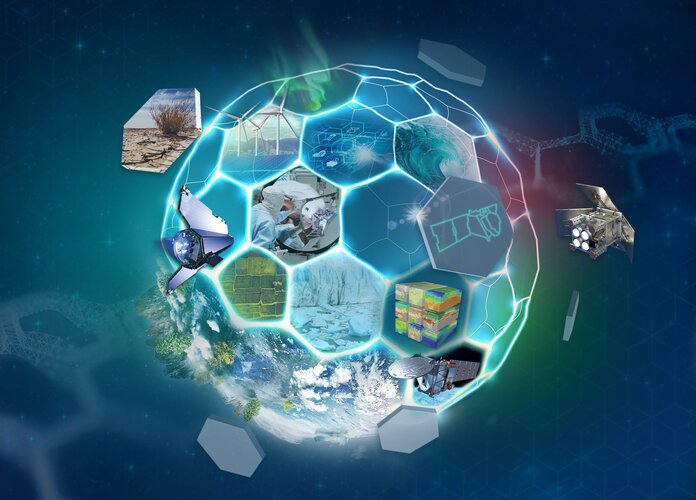
On 9 July 2025, leading scientists and experts in Earth observation will gather in Prague, Czechia, for a pivotal moment in Earth science – to delve into and debate the strengths of the two finalist candidate satellite missions, CAIRT and WIVERN, as they compete to be selected as ESA’s eleventh Earth Explorer.
Antarctic waters getting saltier as sea ice wanes
4.7.2025 8:25
Using data from ESA’s SMOS satellite, scientists have revealed a surprising shift in the Southern Ocean – surface waters around Antarctica are growing saltier, even as sea ice is diminishing rapidly. This finding defies the norm because melting ice typically freshens ocean surface water.
The implications are far-reaching as changes in this remote region can disrupt global ocean currents, affect climate patterns, and alter ecosystems far beyond the Antarctic.
MTG-S1 and Copernicus Sentinel-4 mission highlights
2.7.2025 15:00 Video:
00:00:00
Video:
00:00:00
Two meteorological missions – Meteosat Third Generation Sounder-1 (MTG-S1) and the Copernicus Sentinel-4 mission – have launched on board a SpaceX Falcon 9 from Cape Canaveral in Florida, US.
Both are world-class Earth observation missions developed with European partners to address scientific and societal challenges.
The MTG-S1 satellite will generate a completely new type of data product, especially suited to nowcasting severe weather events, with three-dimensional views of the atmosphere. It is the second in the MTG constellation to be prepared for orbit and is equipped with the first European operational Infrared Sounder instrument.
Copernicus Sentinel-4 will be the first mission to monitor European air quality from geostationary orbit, providing hourly information that will transform how we predict air pollution across Europe, using its ultraviolet, visible, near-infrared light (UVN) spectrometer.
MTG-S1 and Copernicus Sentinel-4 mission highlights
2.7.2025 15:00 Video:
00:03:30
Video:
00:03:30
Two meteorological missions – Meteosat Third Generation Sounder-1 (MTG-S1) and the Copernicus Sentinel-4 mission – have launched on board a SpaceX Falcon 9 from Cape Canaveral in Florida, US.
Both are world-class Earth observation missions developed with European partners to address scientific and societal challenges.
The MTG-S1 satellite will generate a completely new type of data product, especially suited to nowcasting severe weather events, with three-dimensional views of the atmosphere. It is the second in the MTG constellation to be prepared for orbit and is equipped with the first European operational Infrared Sounder instrument.
Copernicus Sentinel-4 will be the first mission to monitor European air quality from geostationary orbit, providing hourly information that will transform how we predict air pollution across Europe, using its ultraviolet, visible, near-infrared light (UVN) spectrometer.
MTG-S1 and Sentinel-4 launch to change how we see our atmosphere
2.7.2025 0:30
The second of the Meteosat Third Generation (MTG) satellites and the first instrument for the Copernicus Sentinel-4 mission lifted off at 23:04 CEST on Tuesday, 1 July. The satellite is now on its way to monitor Earth’s atmosphere from an altitude of 36 000 km. From this geostationary orbit, the missions can provide game-changing data for forecasting severe storms and air pollution over Europe.
MTG-S1 and Sentinel-4 launch to change how we see our atmosphere
2.7.2025 0:30
The second of the Meteosat Third Generation (MTG) satellites and the first instrument for the Copernicus Sentinel-4 mission lifted off at 23:04 CEST on Tuesday, 1 July. The satellite is now on its way to monitor Earth’s atmosphere from an altitude of 36 000 km. From this geostationary orbit, the missions can provide game-changing data for forecasting severe storms and air pollution over Europe.
MTG-S1 and Copernicus Sentinel-4 launch from Florida
1.7.2025 23:04 Video:
00:00:57
Video:
00:00:57
Two meteorological missions – Meteosat Third Generation Sounder-1 (MTG-S1) and the Copernicus Sentinel-4 mission – have launched on board a SpaceX Falcon 9 from Cape Canaveral in Florida, US.
Both are world-class Earth observation missions developed with European partners to address scientific and societal challenges.
The MTG-S1 satellite will generate a completely new type of data product, especially suited to nowcasting severe weather events, with three-dimensional views of the atmosphere. It is the second in the MTG constellation to be prepared for orbit and is equipped with the first European operational Infrared Sounder instrument.
Copernicus Sentinel-4 will be the first mission to monitor European air quality from geostationary orbit, providing hourly information that will transform how we predict air pollution across Europe, using its ultraviolet, visible, near-infrared light (UVN) spectrometer.
Southern Europe’s land and sea sizzles
1.7.2025 13:41 Image:
A powerful heatwave has been gripping large parts of southern Europe. This image, captured by the Copernicus Sentinel-3 mission’s Sea and Land Surface Temperature Radiometer on 29 June 2025, reveals the temperature of the land surface.
Image:
A powerful heatwave has been gripping large parts of southern Europe. This image, captured by the Copernicus Sentinel-3 mission’s Sea and Land Surface Temperature Radiometer on 29 June 2025, reveals the temperature of the land surface.
Southern Europe’s land and sea sizzles
1.7.2025 13:41 Image:
A powerful heatwave has been gripping large parts of southern Europe. This image, captured by the Copernicus Sentinel-3 mission’s Sea and Land Surface Temperature Radiometer on 29 June 2025, reveals the temperature of the land surface.
Image:
A powerful heatwave has been gripping large parts of southern Europe. This image, captured by the Copernicus Sentinel-3 mission’s Sea and Land Surface Temperature Radiometer on 29 June 2025, reveals the temperature of the land surface.
MTG-S1 satellite hosting the Sentinel-4 instrument is ready for liftoff
30.6.2025 15:50
The Meteosat Third Generation Sounder (MTG-S1) satellite, which is hosting the instrument for the Copernicus Sentinel-4 mission, has been placed inside the nose cone of the Falcon 9 launch rocket and is ready for the scheduled liftoff at 23:03 CEST on Tuesday, 1 July.
Revisit Living Planet Symposium: watch session replays
29.6.2025 10:15Revisit Living Planet Symposium 2025
Watch session replays
Living Planet Symposium highlights in pictures
27.6.2025 18:20
ESA Living Planet Symposium concludes today, having brought together more than 6500 people across the Earth observation community. The takeaways include new connections, collaborations, not to mention the revelation of pioneering mission images. As a picture is worth a thousand words, here’s a selection that captures just a few of the many highlights.
Living Planet Symposium Extra News: Day 5
27.6.2025 13:45
ESA’s Living Planet Symposium came to a close today, concluding a week of networking, discussions and meeting of curious, scientific minds.
Today, one of the focal points was thermal imaging instruments, which are critical for monitoring land-surface temperature – and will be carried on upcoming missions such as the upcoming Copernicus Land Surface Temperature Mission. ESA’s Soil Moisture and Ocean Salinity (SMOS) mission celebrated passing its 15-year milestone in orbit – the mission has helped improve weather and climate models. Three new contracts were signed for ESA’s InCubed programme, which is central to the agency’s efforts to turn promising concepts into successful Earth observation services, strengthening Europe’s position in this rapidly evolving sector.
Swarm in tune with atmospheric hot flushes
27.6.2025 9:44
Scientists are harnessing data from ESA’s Swarm mission and ground-based instruments to precisely measure the strength and duration of intense upper-atmosphere heating – dramatic ‘hot flushes’ triggered by solar storms that also cause Earth’s tenuous outer atmospheric layers to expand rapidly.
This research, funded by ESA's Earth Observation FutureEO Science for Society initiative, offers crucial insights into how geomagnetic activity affects satellite orbits and space weather conditions.
Living Planet Symposium Extra News: Day 4
26.6.2025 17:15
The fourth day of ESA’s Living Planet Symposium was busier than ever.
Today, ESA signed an agreement on integrating satellite data into global environmental reporting frameworks as part of ESA’s Fundamental Data Records Framework. A contract with the Finnish government and the Finnish Meteorological Institute was signed to establish a calibration and validation ‘supersite’. ESA and the Taskforce on Nature-related Financial Disclosures paved the way to integrating satellite data into environmental reporting frameworks. And the New Space Scout missions were also in the spotlight as ESA signed a contract with ISISPACE to development of the Tango mission. Four new Scout mission concepts were also announced.
New ESA gravity mission to detect weakening ocean conveyor
26.6.2025 15:15
At the Living Planet Symposium, attendees have been hearing how ESA’s Next Generation Gravity Mission could provide the first opportunity to directly track a vital ocean circulation system that warms our planet – but is now weakening, risking a possible collapse with far-reaching consequences.
Watch MTG-S1 and Sentinel-4 launch live
26.6.2025 12:31
The second of the Meteosat Third Generation (MTG) satellites and the first instrument for the Copernicus Sentinel-4 mission are ready for liftoff at Cape Canaveral in Florida, US. Live coverage of this launch will be shown on ESA WebTV, on Tuesday, 1 July.
Watch MTG-S1 and Sentinel-4 launch live
26.6.2025 12:31
The second of the Meteosat Third Generation (MTG) satellites and the first instrument for the Copernicus Sentinel-4 mission are ready for liftoff at Cape Canaveral in Florida, US. Live coverage of this launch will be shown on ESA WebTV, not earlier than Tuesday, 1 July.
Satellite records expose fire driving Gran Chaco transformation
26.6.2025 10:30
At ESA’s Living Planet Symposium, scientist have unveiled how the combination of different long-term, high-resolution satellite datasets from ESA’s Climate Change Initiative is shedding new light on the South American Gran Chaco – one of the world’s most endangered dry forest ecosystems. These data reveal, in remarkable clarity, that fire is the primary driver of widespread, accelerating deforestation across the region.




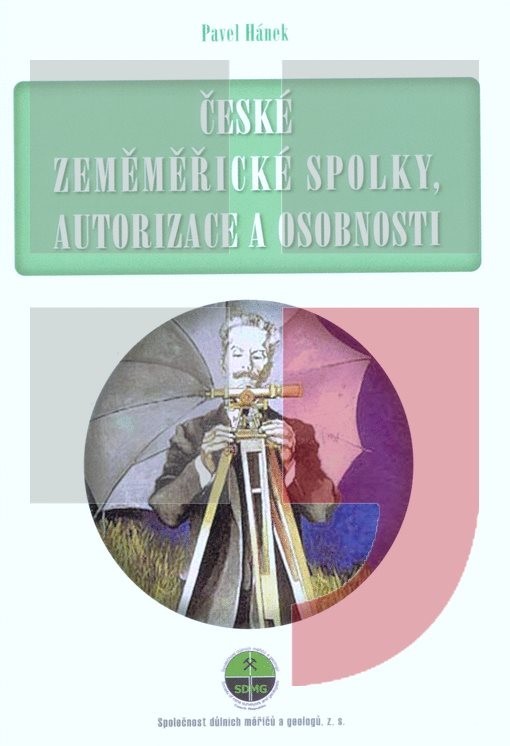
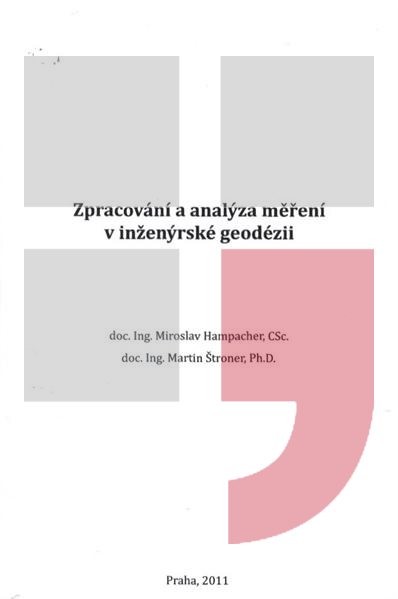

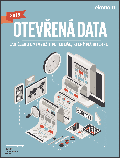

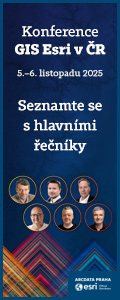
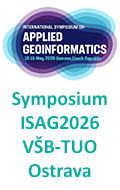
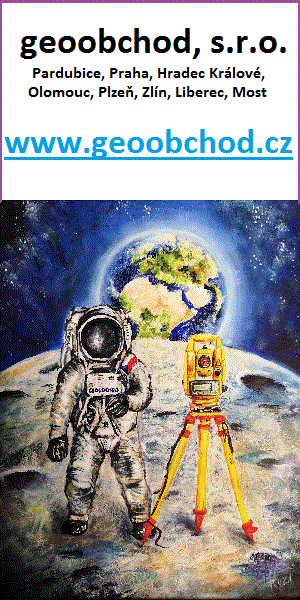

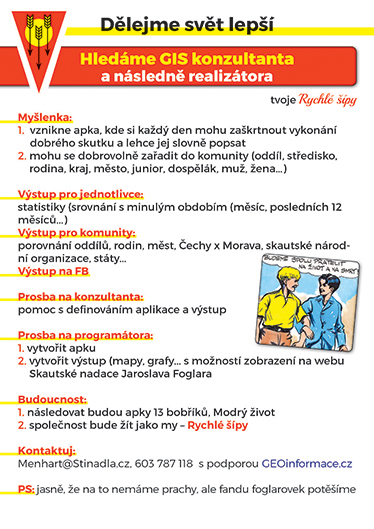





 Image:
Earth from Space: Zanzibar, Tanzania
Image:
Earth from Space: Zanzibar, Tanzania